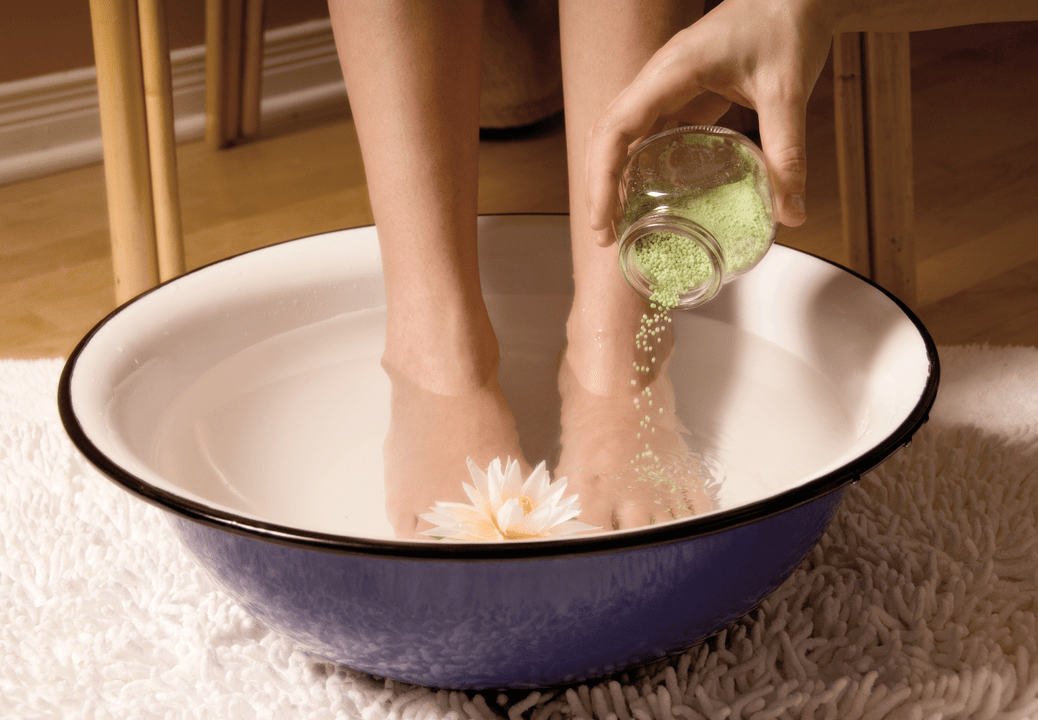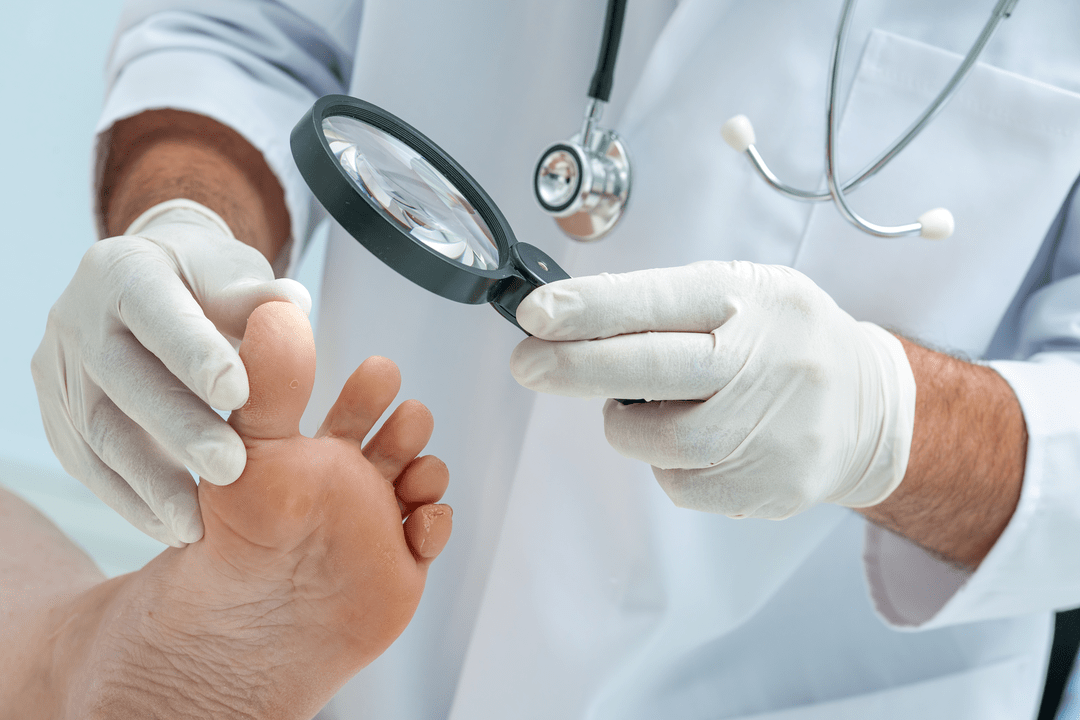Infection also occurs through contact with infected areas of the body under favorable conditions - high temperature and humidity. That is why the likelihood of developing onychomycosis is very high in baths, saunas and gyms. Toenail fungus, which can be treated at home, is one of the most unpleasant subspecies of this disease.
Symptoms
It is very difficult to ignore the symptoms of toenail fungus.
The most common symptoms are:
- change in color of the damaged nail plate to toxic gray or dirty yellow,
- itching of the skin in the area of infection,
- gradual peeling of the nail, it crumbles,
- painful sensations when touching an area of skin affected by inflammation that has acquired a red color.

Reasons for the difficulty in treating nail fungus
Many people face the following problem: a person has cured a fungus, but after a while it manifests itself again. There can be several reasons for this:
- If treated improperly, the fungus can penetrate deep into the tissue and become resistant to various agents.
- mistakes when choosing a medication,
- initially weak immunity caused by living in a polluted environment (e. g. in a big city),
- other diseases that may prevent a stable recovery. For example, diabetes mellitus, varicose veins, etc.
- the inability to completely destroy nail fungus. Every year new strains of this disease appear that are resistant to certain drugs.
- low sanitary conditions.

Treatment of onychomycosis
There are many ways to treat nail onychomycosis. For example, laser procedures in a clinic. But they are all quite expensive and are suitable for a narrow circle of people - on average, a complete treatment of 10 nail plates costs a decent amount of money.
In contrast to laser procedures, special creams, ointments and tablets are suitable for a wide range of people and are available in every pharmacy. Before using them, you should grind or, even better, remove the damaged nail plate as much as possible. This can be done either with a file or in the surgeon's office.
All drugs for onychomycosis are divided into several groups:
- pills,
- anoint,
- Varnishes and solutions.
The choice of a specific antifungal drug depends on three factors: the size of the affected area, the physiological condition of the person (for example, antibiotics are contraindicated in old sick people) and the duration of the disease. Based on this, the attending physician prescribes the necessary medication to the patient. In each short thematic video, various remedies and treatment methods are well described.
Inexpensive tablets and capsules against onychomycosis
Medicines used to treat fungal infections
For any fungal disease, tablets based on the active ingredient are prescribed. It is better to combine them with special ointments. Applied internally in capsule form. Contraindications: Not recommended for use in people with hypersensitivity or during breastfeeding and pregnancy. Perhaps this drug is the best choice for patients, since there are no serious contraindications or side effects to drugs based on this substance.
Synthetic broad-spectrum antifungal
Antifungal capsules have a similar effect to the previous drug, but have fewer options for use. This makes combating certain strains of nail fungus much more effective.
The capsules are taken immediately after meals and washed down with water. It is not recommended to take this medicine to people who are hypersensitive to its components. Sometimes the patient may experience itching, burning in the vagina and a rash near the external genitals. This is a normal reaction of the body; You should not stop treatment for this reason.
Antimicrobial drug for systemic use
Cheap pills. They are taken for many types of onychomycosis, including athlete's foot and toe fungus. The advantage of the drug is its good combination with antibiotics.
It should be taken once a day before meals, which is also beneficial. However, it is strongly recommended for people with severe organic damage to the nervous system and children. The drug is effective.
Antifungal ointments and creams
Medicinal solution for the treatment of skin infections of fungal origin
The most famous and "advertised" cream against mycosis. For the treatment of the nail plates on the feet and hands. Before use, you need to grind your nails. Apply ointment underneath. After application, the substance remains under the nail for a long time, which accelerates the healing process and the duration of the effect.
There are practically no contraindications, except that the use of the drug is not recommended in children, pregnant women and even during breastfeeding.
Antifungal agent for external use
An expensive drug designed specifically to treat nail fungus. Can be used to treat onychomycosis in children over 4 years old. Unlike analogues, the patient feels the effect of this colorless serum after just a few days of use. There are practically no contraindications: it can be used even during pregnancy.
The only thing that puts me off is the high price for 5 grams of this medicine. This varies from pharmacy to pharmacy, but patients say the high cost is certainly justified.
Medical device with patented formula
A modern, inexpensive remedy for toenail fungus. Before use, it is recommended to cut off the area affected by mycosis. The product should then be applied directly to the nails (not underneath! ). This medication is contraindicated in children and adolescents under 18 years of age. It is prescribed by the attending physician. When using it (be sure to use it once a day due to its effectiveness) you may feel a slight burning sensation, but don't panic, it will pass quickly.
Creams and tablets for the prevention and treatment of athlete's foot
There are ointments and tablets. Taking the latter is not recommended as there are more effective analogues. In contrast, the ointment is worth trying.
Depending on the severity of the fungus, it is rubbed under the nail once or twice a day (it is cleaned and shortened beforehand). The effect is noticeable on the second day. But even if the patient feels that the mycosis is localized, treatment must be completed. For a mild form of the fungus it is 1 week, for a severe form it is 2 weeks.
Contraindications: The cream can cause severe allergies or itching if taken incorrectly. Therefore, before starting effective treatment for athlete's foot, consult a specialist.
Antifungal varnishes
Broad-spectrum antifungal agent with good penetration ability
Expensive but effective varnish against fungi. Suitable for both the treatment and prevention of various fungal diseases. But the drug is a kind of "antibiotic". So if it has already been used for treatment once, it is not worth using it a second time - the effect will not justify the money spent, because the fungus most likely has immunity to the drugdeveloped.
Before application, the damaged nail is filed with a file, then the varnish itself is applied. It leaves a shine that is undesirable for men. The drug is used every other day! During this time it has time to be absorbed and reach the source of infection.
Varnish for the treatment and prevention of nail fungus
Well-known expensive paint. It is also an antifungal antibiotic, so repeated use is not recommended. The method of application does not differ from the previous varnish, but, unlike it, this drug is allergenic.
Contraindications: Not recommended for pregnant women and children as well as for allergy sufferers. The paint is very toxic.
Apply varnish to the damaged nail once or twice a week, having previously treated and cleaned it with a nail file.
Prevention of toenail fungus
Onychomycosis is extremely contagious and difficult to treat. A person infected with this disease requires treatment that may last more than a month. Because even if the disease is destroyed, a few spores remaining on the legs can trigger it again. Treatment must be carried out carefully and under the supervision of an experienced specialist.
But even if a person is not affected by the disease, there is no need to sit at home and wait for infection. Prevention helps not to be afraid of fungi. Just remember a few simple rules:
- Never use the same tools to treat diseased and healthy nails, as well as affected areas of skin. As strange as it may sound, this way there is less risk of infection of healthy nails, especially on neighboring hands and feet.
- Wash your socks more often. This rule applies especially to men, because. . . They are the ones who care least about cleanliness. Don't wear the same socks you wore a few days ago.
- Do not wear other people's clothes and shoes. This applies to all clothing that comes into contact with hands and feet (gloves, socks) and, in principle, to all shoes. Even slippers from the same family should have their own. After all, the fungus is very contagious - if one family member becomes infected, the rest become infected too.
- Wear only slippers on the beach. No closed shoes!
- Visit the sauna or bathhouse opposite in closed shoes. Avoid splashing water,
- After showering and swimming, be sure to dry your feet completely and treat them with an antifungal ointment. This rule applies especially to swimming in public rivers and lakes.



















